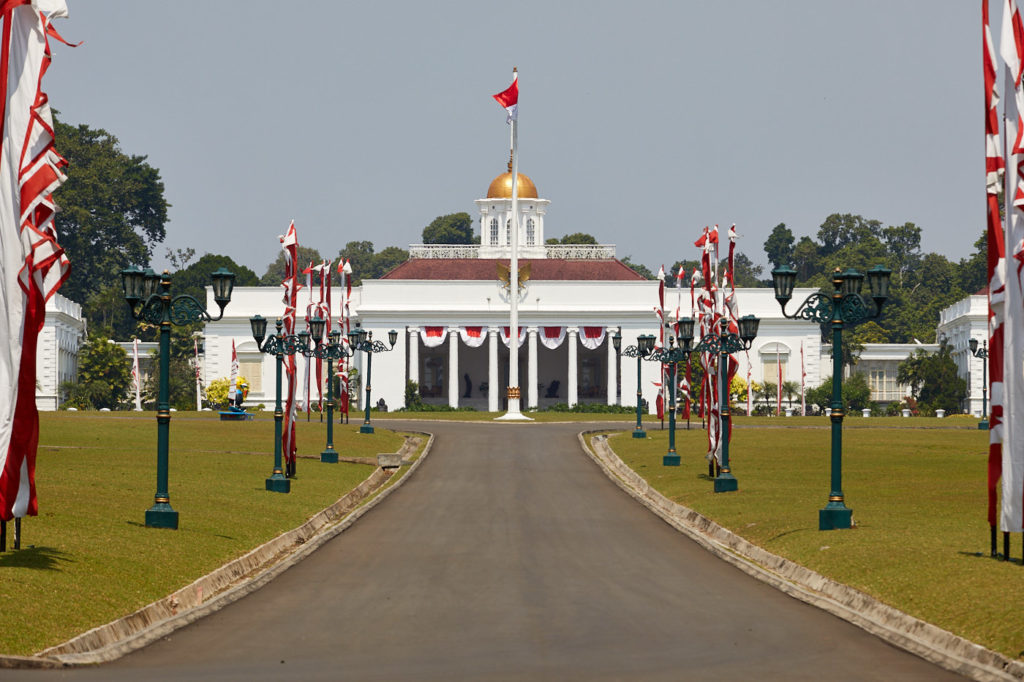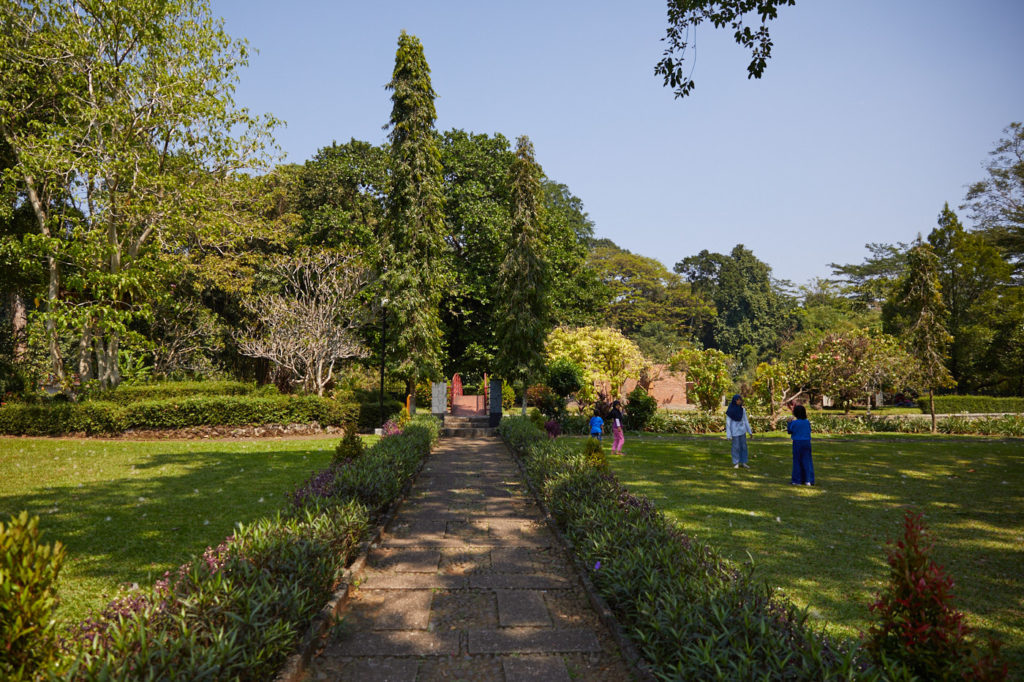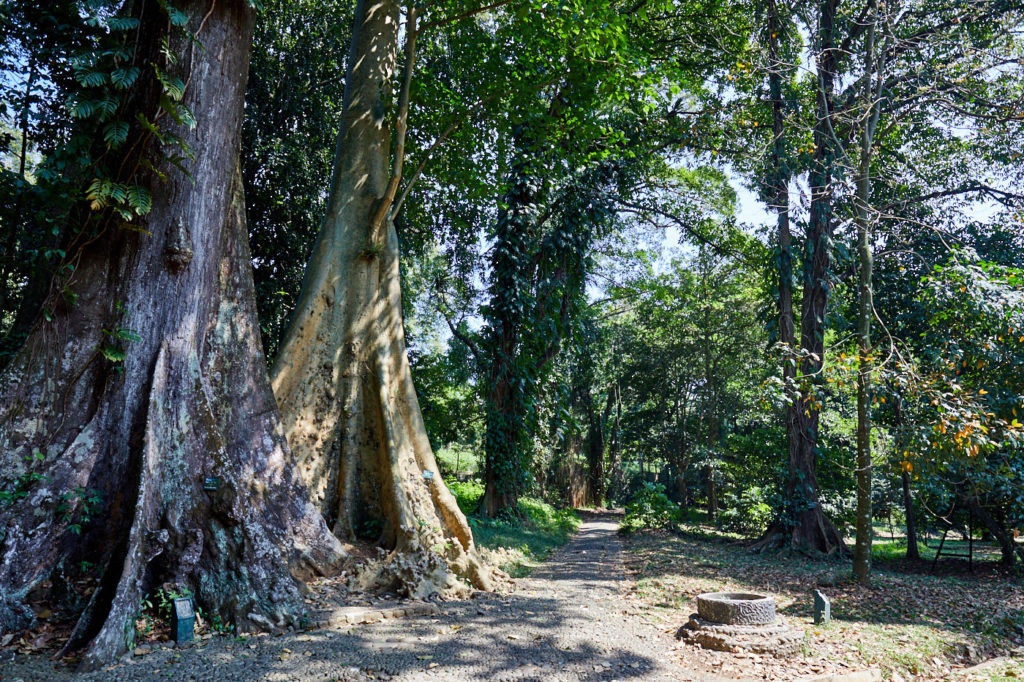Kebun Raya, Bogor: Gardens in the city

Kebun Raya, Bogor: Gardens in the City
He who plants a garden, plants happiness, says the old proverb. When Casper Georg Carl Reinwardt established his botanical gardens at Buitenzorg, West Java in 1817 he did just that. For everybody. Buitenzorg is now called Bogor and the gardens are called Kebun Raya, which means quite simply Botanical Gardens. They don’t need a name, if you go to Bogor you can’t miss them.
Bogor is one of the best reasons to go to Jakarta. The capital does have its points of interest. Particularly the northern part around old Batavia, the former Dutch quarter and the old port. But the traffic is enough to try the patience of a saint.
Bogor is about an hour away by train from Jakarta Kota station. While the traffic, when you get off the train, might not seem much better it is worth remembering that Kebun Raya takes up 87 hectares of city centre. The Palace, Istana Bogor which adjoins the gardens, takes up another 28.4 hectares. The town grew up around them.
The area had been popular with Java’s Hindu rulers as far back as the 14th century. Nestling 290 metres above sea level with shady trees, a refreshing climate and the majestic backdrop of Gunungs Selak and Pangrango to the south.
In 1745 the Governor-General of the Dutch East Indies, Baron Gustaaf van Imhoff, built a country retreat there. He named it Buitenzorg, meaning “without a care”. Sir Stamford Raffles also found it to his liking. In 1911 he wrote, “I have now from my window a prospect of the most delightfully picturesque scenery, a valley filled with rice, with a romantic little village at the beginnings of a stream which rushes down by twenty torrents and roars booming over rocks innumerable; in the background a magnificent range of mountains, wooded to the top and capped in clouds.” During his tenure, from 1811 to 1816, he rebuilt the palace and started to lay out the grounds as an English-style landscape garden even going to the trouble of importing two gardeners from Kew.
An earthquake destroyed Raffles’ palace in 1834. The present one was built in 1856 and served as the official residence of the Governors-General of the Dutch East Indies until 1942. It was used by President Sukarno until 1965 but since then it has only been used for special functions. According to the receptionist at my hotel the ghost of Sukarno still roams the corridors at night.

Istana Bogor, the Presidential palace
Unfortunately, the palace is not normally open to the public though I believe there are open days and that it is also possible for groups to visit providing written permission is obtained beforehand.
But it is the gardens that draw me back to Bogor whenever I am in the area.
They began life when Reinwardt, a German botanist living in Amsterdam, was appointed as Director of agricultural businesses, arts and sciences on Java and neighbouring islands. He was interested in studying plants that were used locally for medicinal purposes and this gave him the opportunity to collect plants and seeds from all over Indonesia. He decided to gather them all together at Buitenzorg and on May 18, 1817, the gardens were established on 47 hectares of land bordering the palace. They were expanded to 60 hectares in 1892 and again to their present size in 1927.
Kebun Raya was the first botanical garden in Southeast Asia and since its foundation, it has served as a major research center for agriculture and horticulture. Over the years it has conducted research into crops such as African oil palm, cinchona, coffee, cocoa, rubber, tobacco, tea, soy and rice. Specifically to learn about the pests and diseases that are a threat to them. It is run by the Indonesian Institute of Sciences which also operates three other gardens in Java and Bali.
A walk in the park
The gates open at 8.00 am. In the cool, early morning light the shadows are long and the leaves translucent in the sunlight. Through the pillars of the old gate, the tumult of Bogor’s rush hour recedes. There is a memorial to Lady Raffles on the right. Ahead, Canarium Avenue, a lane flanked by two lines of Javanese almond trees. They were planted in 1832 by Johannes Teysmann who was the curator at the time.
A map that you can ask for when you buy your ticket shows all the main paths but there is an intricate network of smaller paths that are not marked. Furthermore, it is perfectly acceptable to stray from those when the mood takes allowing you to wander from path to path between tall trees, palms and over thirty different species of bamboo. There are streams with bridges, a Canarium Avenue II with dangling lianas and a Mexican garden filled with cacti and agave.


Local children play in the gardens (left). Neatly clipped lawns and a delightful cafe.

The matching trees. Shoria leprosula on the far left and ficus albipila
There’s an almost Alice in Wonderland-like quality to these gardens. A stroll by a peaceful lake with reflections of the palace shimmering on its surface leads almost imperceptibly into an area of tall tropical hardwoods which in turn gives way to a small formal garden called the Sudjana Kassan Park after the garden’s first Indonesian curator.
Man-made features include a pond almost covered with Victoria Amazonica, giant water lilies that can support the weight of small children. There is an orchid house and a neatly clipped rolling lawn by the side of a delightful café where you can sit and enjoy a coffee or a bowl of noodles.
On fine weekends there are plenty of locals out to enjoy the gardens. Children play on the lawns and families settle down to picnics in shady spots. Young couples seek out the matching trees. These are two jungle giants, each around 150 years old. They grow so close together that local myth has it that if a young couple sits under the trees together their relationship will blossom. The two trees are actually of different species. The larger of the two is shoria leprosula or meranti, the other a type of fig called ficus albipila.
On weekdays, especially early in the morning, you have the gardens almost all to yourself with only the calls of birds to disturb you. More than fifty species have been recorded in the park and flying foxes, a large species of bat with a fox-like face, also roost there. Even macaques, I was told, are sometimes seen. But the only primates I encountered, on my last morning before I headed back to Jakarta, was an art class from a local school.
What a lovely way to start a morning! It seems so serene & meditative, a foundation for the day. Thank you for sharing this post & putting Kebun Raya on our radar!
Thanks, it is a lovely way to start the day. Early morning on a weekday is best because you have the park almost to yourself.